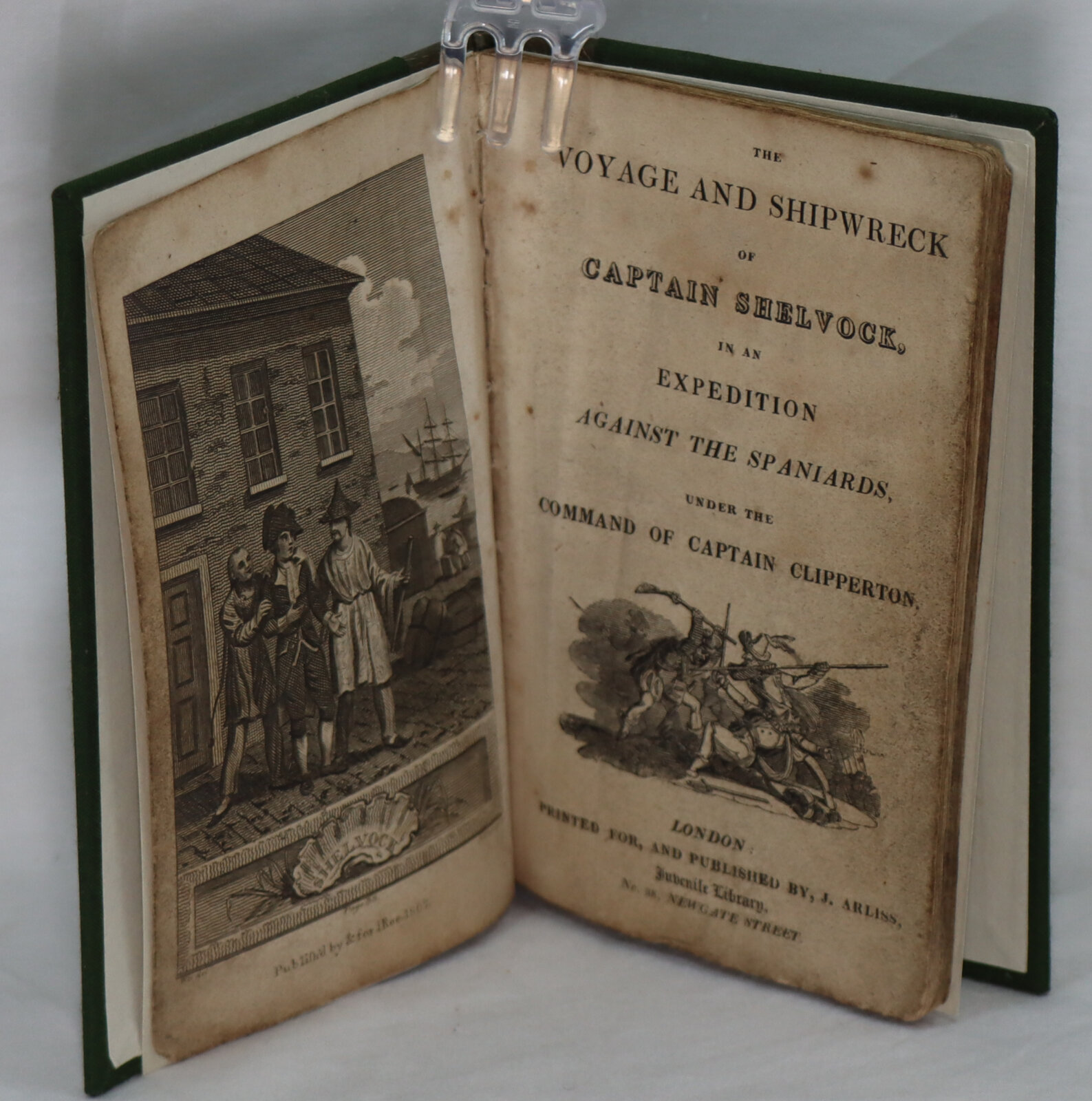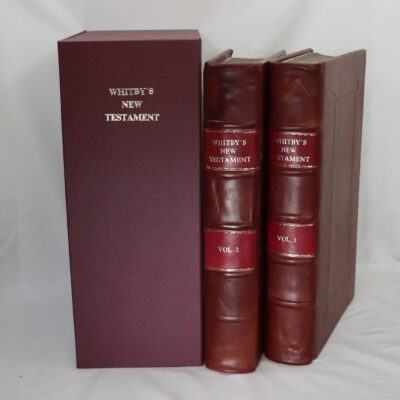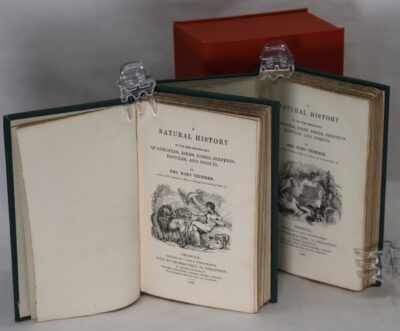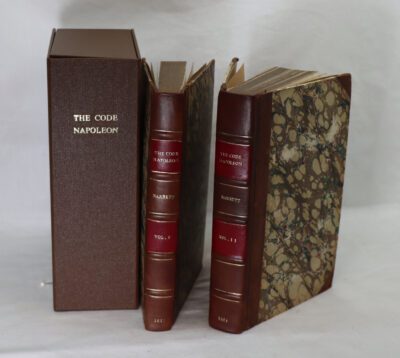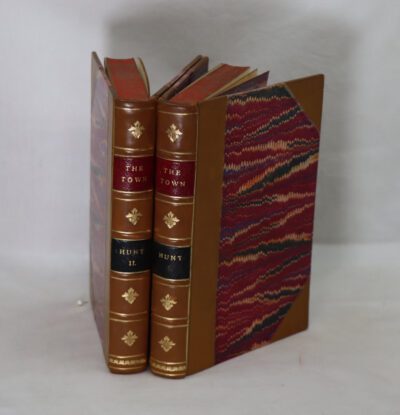The Shipwreck of Captain Shelvock.
Printed: Circa 1820
Publisher: Junvenile Library.
| Dimensions | 9 × 14 × 1 cm |
|---|---|
| Language |
Language: English
Size (cminches): 9 x 14 x 1
Condition: Fine (See explanation of ratings)
Your items
Item information
Description
Green cloth boards with gilt title on the front board. Green calf spine.
-
F.B.A. provides an in-depth photographic presentation of this item to stimulate your feeling and touch. More traditional book descriptions are immediately available.
This chapbook for children has been beautifully rebound by Mr. Brian Cole.
George Shelvocke (baptised 1 April 1675 – 30 November 1742) was an English Royal Navy officer and later privateer who in 1726 wrote A Voyage Round the World by Way of the Great South Sea based on his exploits. It includes an account of how his second captain, Simon Hatley, shot an albatross off Cape Horn, an incident which provided the dramatic motive in Samuel Taylor Coleridge’s poem The Rime of the Ancient Mariner.
Focus on the publisher: ‘The Juvenile Library’ founded by W. Godwin.
William Godwin’s ancestors are purported to derive from the House of Godwin – https://www.f-b-a.com/product/
William Godwin assisted Thomas Paine write:
https://www.f-b-a.com/product/
William Godwin’s first wife was Mary Wollstonecraft – https://www.f-b-a.com/product/
William Godwin’s daughter was Mary Shelley who wrote ‘Frankenstein’
https://www.f-b-a.com/product/
William Godwin with his second wife in 1805 established the children’s publishing house the Juvenile Library . The Juvenile Library pioneered the world’s current understanding of children’s literature or juvenile literature.
Chapbook frontispiece of Voltaire’s The Extraordinary Tragical Fate of Calas, showing Jean Calas being tortured on a breaking wheel, late 18th century
A chapbook is a small publication of up to about 40 pages, sometimes bound with a saddle stitch. In early modern Europe a chapbook was a type of printed street literature. Produced cheaply, chapbooks were small, paper-covered booklets, usually printed on a single sheet folded into books of 8, 12, 16, or 24 pages. They were often illustrated with crude woodcuts, which sometimes bore no relation to the text (much like today’s stock photos), and were often read aloud to an audience. When illustrations were included in chapbooks, they were considered popular prints.
The tradition of chapbooks arose in the 16th century, as soon as printed books became affordable, and rose to its height during the 17th and 18th centuries. Many different kinds of ephemera and popular or folk literature were published as chapbooks, such as almanacs, children’s literature, folk tales, ballads, nursery rhymes, pamphlets, poetry, and political and religious tracts.
The term “chapbook” for this type of literature was coined in the 19th century. The corresponding French term is bibliothèque bleue (blue library) because they were often wrapped in cheap blue paper that was usually reserved as a wrapping for sugar. The German term is Volksbuch (people’s book). In Spain, they were known as pliegos de cordel (cordel sheets). In Spain, they were also known as pliegos sueltos, which translates to loose sheets, because they were literally loose sheets of paper folded once or twice in order to create a booklet in quarto format. Lubok is the Russian equivalent of the chapbook.
The term “chapbook” is also in use for present-day publications, commonly short, inexpensive booklets.
Chapbooks were cheap, anonymous publications that were the usual reading material for lower-class people who could not afford books. Members of the upper classes occasionally owned chapbooks, perhaps bound in leather with a personal monogram. Printers typically tailored their texts for the popular market. Chapbooks were usually between four and twenty-four pages long, and produced on rough paper with crude, frequently recycled, woodcut illustrations. They sold in the millions.
After 1696 English chapbook peddlers had to be licensed, and 2,500 of them were then authorized, 500 in London alone. In France, there were 3,500 licensed colporteurs by 1848, and they sold 40 million books annually.
The centre of the chapbook and ballad production was London, and until the Great Fire of London (1666) the printers were based around London Bridge. However, a feature of chapbooks is the proliferation of provincial printers, especially in Scotland and Newcastle upon Tyne. The first Scottish publication was the tale of Tom Thumb, in 1682.
Condition notes
Want to know more about this item?
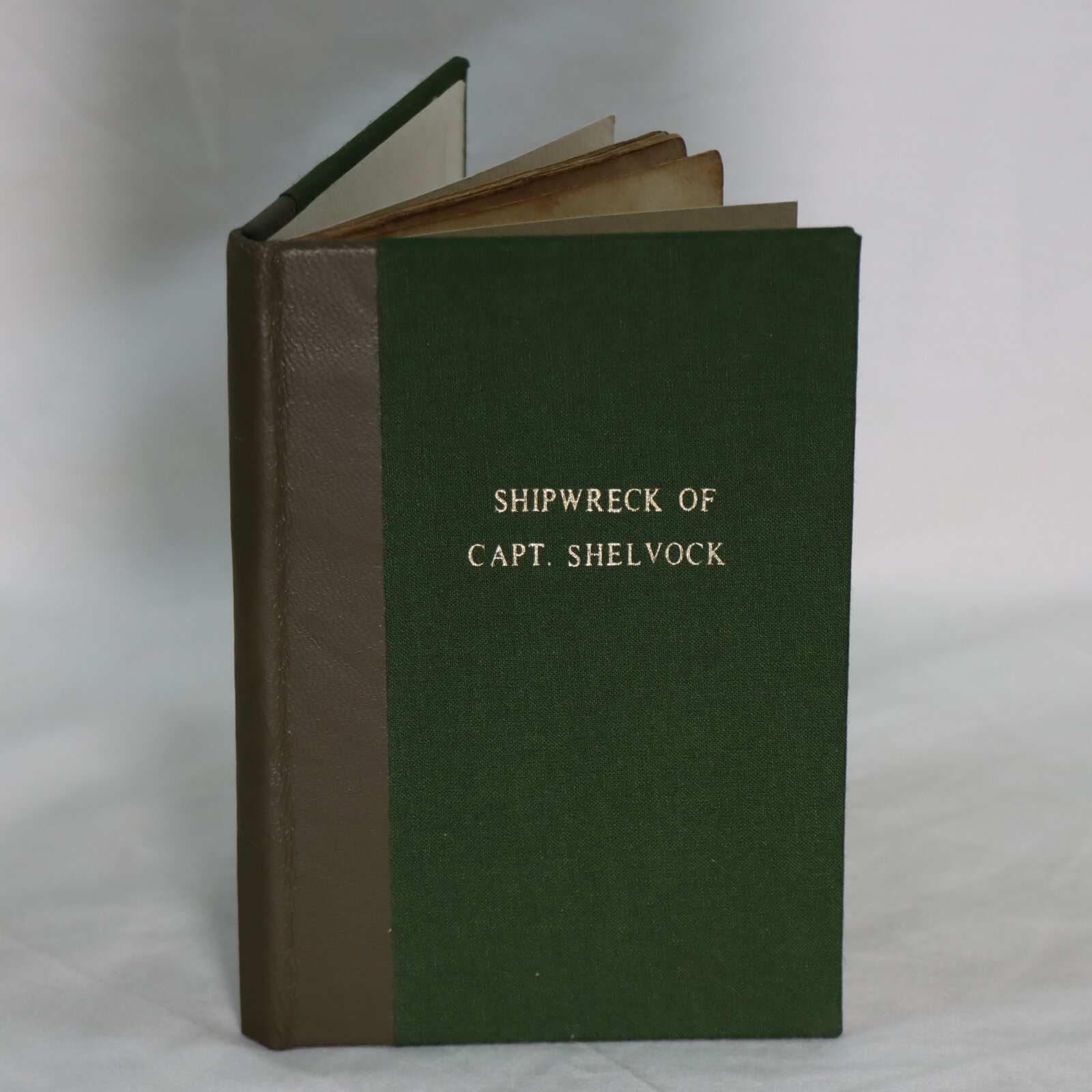
Related products
Share this Page with a friend

